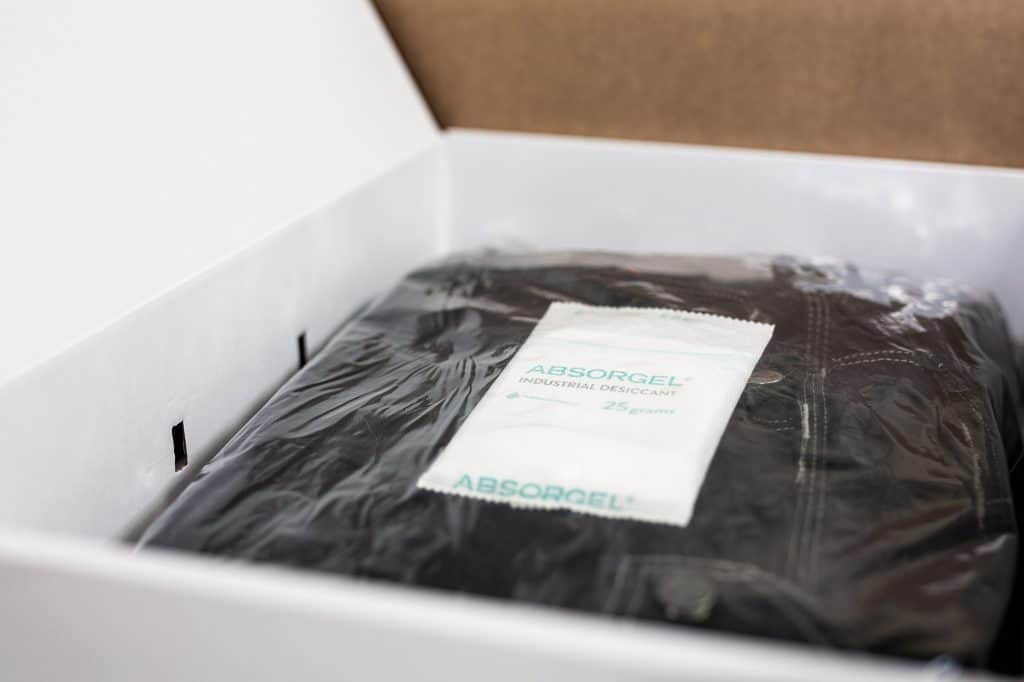Calcium chloride and silica gel are two of the most effective desiccants used to combat moisture damage in logistics and shipping. Every year, moisture-related issues contribute to approximately 10% of container shipment losses, with overall damages estimated between $400 and $500 billion. To prevent such losses, companies rely on desiccants to absorb excess moisture, keeping goods dry during transit. These moisture absorbers come in different forms and materials, each offering unique benefits depending on the application.

How Does Calcium Chloride and Silica Gel Absorb Moisture?
Both calcium chloride and silica gel are powerful moisture absorbers, but they work in different ways.
- Calcium chloride pulls water from the air very quickly and can absorb up to three times its weight in moisture. As it does this, it turns into a thick liquid. This makes it perfect for high-humidity areas, like shipping containers or storage spaces, where fast moisture control is needed.
- Silica gel, on the other hand, traps moisture in its tiny pores without turning into a liquid. It can absorb up to 40% of its weight in water while staying dry to the touch. Because of this, it’s great for protecting electronics, medicines and delicate items that need gentle moisture control.
💡 Did you know? The amount of moisture silica gel absorbs depends on temperature and humidity, but it can be dried out and reused multiple times!
Calcium Chloride vs. Silica Gel: Which One is More Effective?
Both drying agents are excellent moisture absorbers, but they perform differently depending on the situation.
- If you need maximum moisture absorption, calcium chloride is the stronger option. It can pull in significantly more water than silica gel, making it ideal for shipping containers, warehouses, and damp storage spaces.
- If you need a reusable option that stays dry, silica gel is the better choice. Since it doesn’t turn into liquid, it’s perfect for electronics, pharmaceuticals, and delicate materials that need steady, controlled moisture protection.
💡 Key takeaway: Calcium chloride is best for high-humidity environments, while silica gel is better for protecting sensitive items in controlled conditions.
Comparison Table
| Feature | Calcium Chloride | Silica Gel |
|---|---|---|
| Absorption Power | Very high – Absorbs 150% of its weight at 50% humidity, increasing to 600% at 85% humidity. | Moderate – Absorbs around 25% of its weight at 50% humidity, reaching 36% at 85% humidity. |
| Works Well In | High humidity environments like shipping, storage, and industrial settings. | Low to moderate humidity environments like electronics, pharmaceuticals, and packaging. |
| Does It Leak? | Yes, but controlled – Turns into liquid as it absorbs moisture, but modern designs prevent leaks. | No – Stays solid even when saturated. |
| Reusable? | No – Single-use only. | Yes – Can be dried and reused multiple times. |
| Safe for Long Trips? | Yes – Works well for extended shipments and fluctuating humidity. | No – Can reach full capacity quickly and stop absorbing. |
| Releases Moisture Back? | No – Captured water stays locked in. | Yes – Can release moisture back into the air if temperature or humidity changes. |
| Eco-Friendly? | Yes – Made from naturally occurring calcium chloride, safe for disposal. | Sometimes – Some silica gels contain cobalt compounds, which may require special disposal. |
💡 Tip: If you’re shipping or storing goods long-term, calcium chloride is the better option. If you need a reusable, leak-free solution for small spaces, silica gel is ideal.
Conclusion
It’s clear that desiccants based on calcium chloride have a higher absorption capacity, which increases as the relative humidity rises. Unlike silica gel, which has a limited maximum absorption, the former can continue to protect the freight throughout the entire journey. Additionally, it captures absorbed water in a chamber that prevents moisture from leaking into the cargo space or re-evaporating back into the air. Calcium chloride is also environmentally safe, as it contains a naturally occurring compound abundant in seawater and can be disposed of through regular wastewater. In contrast, silica gel contains compounds that require special disposal using hazardous waste procedures.
We strongly recommend desiccants that utilise calcium chloride, which are featured in Absortech products. We would like to offer advice on moisture-related issues during container transport and how Absortech desiccants can help prevent damage to goods. Please get in touch for more information on how to protect your shipment from moisture problems.
Click here for pdf.

